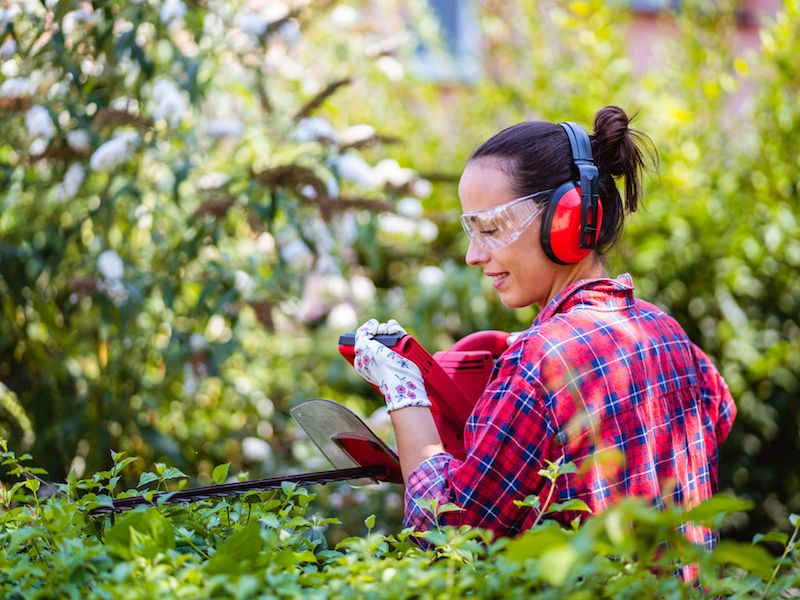
Eating right and protecting your hearing have some similarities. It’s difficult to know where to start even though it sounds like a good idea. This is particularly true if you don’t think your daily environment is very noisy and there aren’t any apparent dangers to your ears. But day-to-day life can stress your ears and your senses, so your auditory acuity can be maintained if you apply these tips.
If you want to keep enjoying the sounds around you, you should do everything you can to slow down the degeneration of your hearing.
Tip 1: Ear Protection You Can Wear
Using hearing protection is the most practical and simple way to safeguard your hearing. This means that diminishing loud and harmful sound is a basic step you need to take.
This means that when it’s needed most people will want to wear ear protection. Two basic forms of protection are available:
- Ear Plugs, which are put in the ear canal.
- Ear Muffs, which are put over the ears.
Neither form of hearing protection is inherently better than the other. There are advantages to each type. Your choice of hearing protection should, most notably, feel comfortable.
Tip 2: Be Aware When Sound Becomes Dangerous
But how can you tell when to use hearing protection? We’re used to connecting harmful noise with painful noise. But much lower levels of sound can harm your ears than you might realize. The sounds of traffic, for example, are loud enough to start damaging your hearing after just a couple of hours. Recognizing when sound becomes dangerous, then, is a vital step in protecting your hearing.
Usually sounds become harmful at the following thresholds:
- Over 100 dB: Your hearing can be very quickly damaged by this. Anything above this threshold can damage your hearing in minutes or seconds. As an example, rock concerts and jet engines will injure your ears in 30 seconds.
- 85 decibels (dB): After around two hours this volume of sound is damaging.This is the level of sound you’d expect from a busy city street or your hairdryer.
- 95-100 dB: This is the typical level of your earbuds or the level of farm equipment. After about 15-20 minutes this volume of sound becomes hazardous.
Tip 3: Your Phone Can Be a Sound Meter
Now that we have a basic concept of what levels of noise could be hazardous, we can take some steps to make sure we limit our exposure. The trick is that, once you’re out and about in the real world, it can be challenging to gauge what’s too loud and what isn’t.
Your smartphone can now be used as a handy little tool. Sound meter apps exist for every type of smartphone.
In order to get an understanding of what hazardous levels of noise really sound like, use your sound meter to confirm the decibel level of everything you are hearing.
Tip 4: Keep Track of Your Volume Buttons
A smartphone with earbuds is commonly the way people listen to music nowadays. This creates a dangerous situation for your hearing. Your hearing can be considerably damaged if you set your earbuds to high over a long period of time.
That’s why protecting your ears means keeping a focused eye on your volume management. You should never increase the volume in order to drown out noises somewhere else. in order to make sure that volume doesn’t get too high, we suggest using volume settings or app settings.
Earbud use can become something of a negative feedback loop if your hearing starts to wane; you could find yourself consistently raising the volume of your earbuds in order to compensate for your faltering hearing, and in the process doing more damage to your hearing.
Tip 5: Get Your Hearing Examined
You may think that having a hearing test is something you do only when your hearing begins to diminish. Without a baseline to compare results to, it’s not always easy to identify a problem in your ears.
Generating data that can be used for both diagnostic purposes and for treatment can best be accomplished by scheduling a hearing exam and screening. This will give you a little extra context for future hearing choices and ear protection.
Keep an Eye on Your Hearing
In an ideal world, protecting your ears would be something you could do constantly without any difficulty. But challenges are always going to be there. So anytime you can and as often as possible, safeguard your ears. Also, get routine hearing examinations. Put these suggestions into practice to improve your chances.
